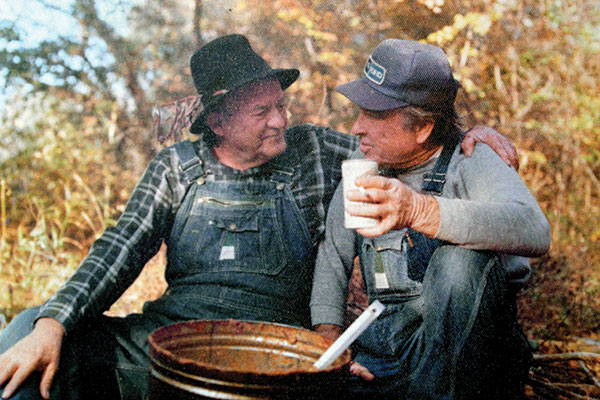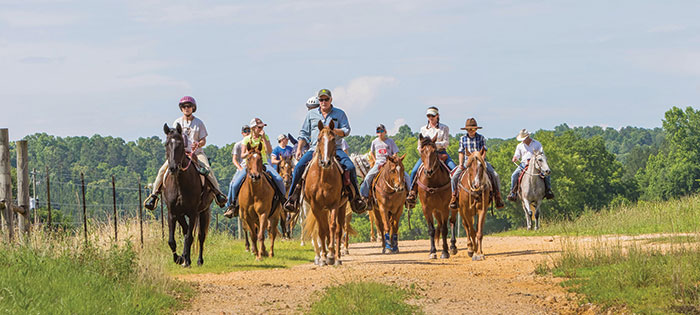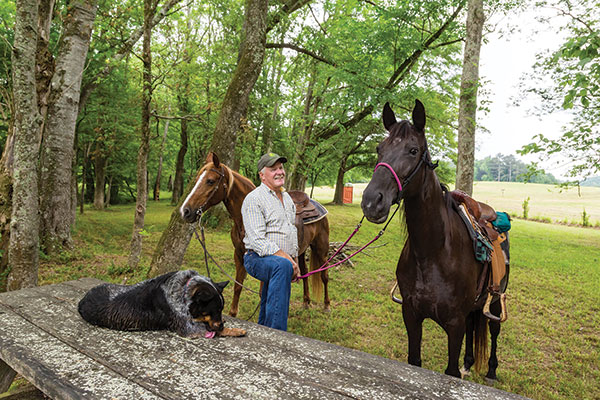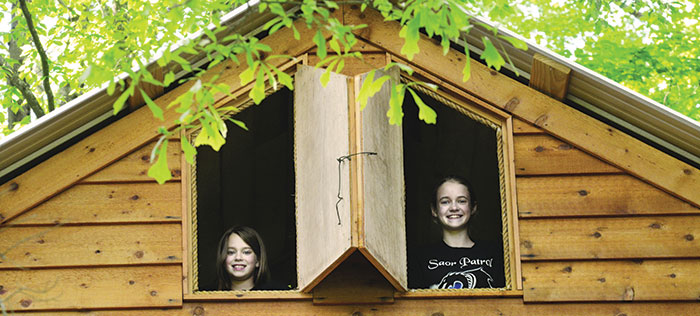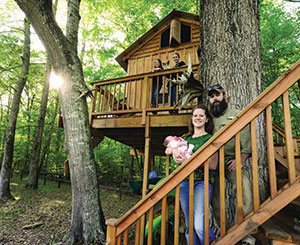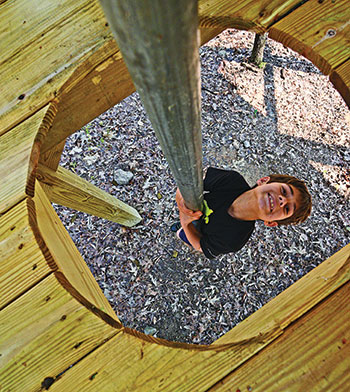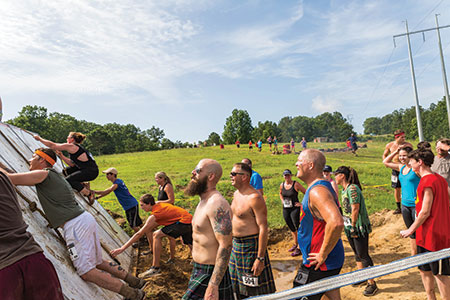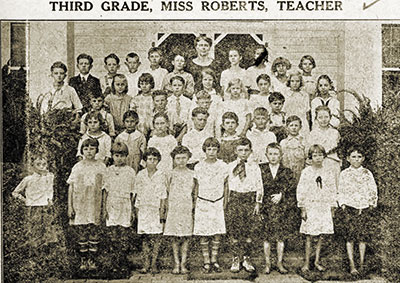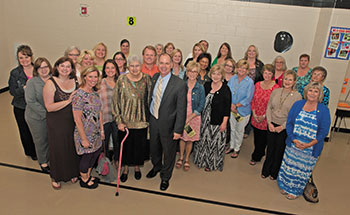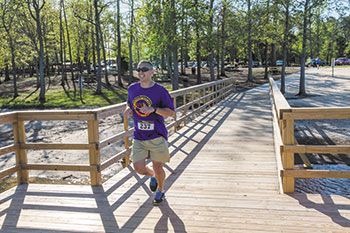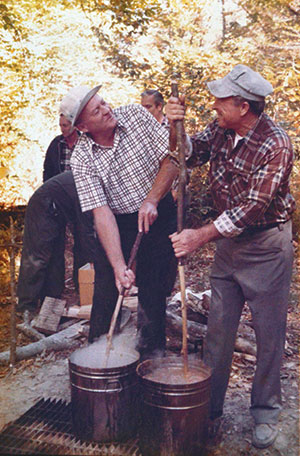 A distinctly Skeeter Park tradition
A distinctly Skeeter Park tradition
Story by Jerry C. Smith
Submitted photos from Hazelwood Family
What’s Mulligan Stew? Well, it’s a big potful of boiling water, loaded with whatever meats and vegetables one has on hand, and cooked until safely edible. However, for St. Clair’s Skeeter Park folks, it’s always been a fine excuse to get together for a grand party on a creek bank somewhere near Eden, pig out on Mulligan and enjoy a tradition that’s occurred non-stop since the 1930s.
You won’t find Skeeter Park on any GPS, nor talked about in society columns, but hundreds of St. Clair folks will agree it’s a culinary and fellowship delight for lucky invitees. While the cuisine has varied over the decades, the camaraderie has remained.
There were actually two distinctly separate groups who held similar events in the same general area: one, a private annual reunion begun in the 1930s that’s still celebrated today, and the other a more frequent but less structured community affair that got together in the 1960s and 70s.
The original group was organized by two local residents, Frank Patterson and John Willingham. They were soon joined by Frank’s brother, Willard “Shanghai” Patterson, and their close friend, W.T. “Dubb” Hazelwood.
These fellows had hunted and fished around Wolf Creek as boys, often camping there overnight to rest and cook their prey. As the youngsters grew into men, their outdoor meals became well-known and, before long, friends started drifting in to share their rustic fare.
Dubb’s son, Ben Hazelwood, soon joined the fun, later taking an active role in food preparation, with help from his own son, Benjamin, then called Little Ben but now 36 years old. The elder Ben recently passed away, but younger Ben continues the Mulligan tradition in memory of good times with his father, and because it’s so much fun.
The official Skeeter Park venue is an unimproved clearing in the woods near Wolf Creek, on land always owned by the Jones family. The park is only about 40 yards wide and 50 yards long, but has a good spring for cooking and drinking water. Dubb’s daughter, Marion (Hazelwood) Hultgren, currently of Tucker, Ga., says the area was a wondrous place to visit any time of the year, abounding with wildflowers. Mulligan Stews became generally popular during the Depression, when roving bands of hobos and others seeking work would gather into camps, often alongside railroad tracks. They had little, but usually shared it for the common good.
Various campers might contribute a couple of onions or a few ears of corn “borrowed” from a nearby farm, a chicken of similar origin, maybe some potatoes and carrots. Separately, not much of a meal, but when cooked together, they became a nourishing sustenance for all.
The Skeeter Park guys found Mulligan easy to make and serve, universally accepted, and impossible to criticize because there is no official recipe. Cooked in 5-gallon steel lard cans which were bought new every year for the purpose, these versatile stews could contain anything edible, including squirrels, rabbits, chickens, turtles, even beavers, but they never added pork until later years when it became plentiful. Nor was venison used, as deer were quite scarce in those days.
Young Ben recalls camping out at the site overnight so he could clean out the spring and be ready the next morning to build a fire big enough to heat two kettles full of water. He says his father expected that water to be boiling when he showed up a few hours later to start the stew.
Ben remembers that, even in latter years, they sometimes used freshly-killed whole squirrels, including heads but without entrails or skins. Side dishes included Southern-reunion staples like cornbread, biscuits, white loaf bread, green beans, sliced tomatoes, and occasionally a potato salad and other party fare.
Dubb’s children, Marion (Hazelwood) Hultgren, Kent Beavers and Freddy Hazelwood, were quite specific about the way their father ran the proceedings. Everyone who handled raw food had to wash their hands vigorously and keep them clean during its preparation.
He was very particular about who handled food and stirred the pots, usually doing most of it himself. The pot had to be stirred in perfect figure-eights, lest it burn. Further, Dubb insisted that stirring sticks had to be hickory saplings of a certain diameter, with just the right size fork at the end.
The stew was boiled and stirred for hours, until all meat had fallen off the bones which, coincidentally, helped disguise the species of whatever animal was in the pot.
Kent said, “If you didn’t know what you were doing, you just sat over there in the shade and drank beer with the others.” Marion added, “If you really messed up and burned the stew, you got thrown into Wolf Creek.”
Attendance was widely variable — as few as a half dozen to more than a hundred, including several regional dignitaries whose names would be easily recognized. Mulligans drew visitors from the ranks of many noted St. Clair families, among them Beavers, Castleberrys, Bowmans, Footes, Bynums, Ginns, Hazelwoods, Robertsons and Cornetts.
For the first three decades or so, participation was limited to men and boys, but in the “liberated” 1970s, they occasionally allowed family ladies to attend. Marion, who was 25 at the time, recalls being among the first girls on the scene. She helped memorialize those days with her photos, some of which appear with this story.
Naturally, these fun-loving folks didn’t confine their activities to eating. According to Freddy and Kent, the guys played poker, took bets on football scoreboards, pitched horseshoes and washers, even shot a few dice. Singing and guitar playing was usually part of the festivities, although they didn’t bring instruments on very cold days, as it could make the strings break.
Alcohol was usually present, but didn’t cause the kind of problems one might think, because Dubb and Ben kept strict order. Lawmen occasionally showed up, but only for food and fellowship. Whether certain attendees fell into Wolf Creek or were actually thrown in to help sober them up is still open for debate.
It’s rumored that Shanghai once asked some poker players for a share of the pot to help finance their meal. If more than $30 was spent on supplies in the old days, it was considered an especially lavish party.
In later years, another group began meeting nearby, at first along the north bank of Wolf Creek, then under a pole shed that still stands behind a convenience store in Eden. This gathering was started in the late 1960s by the store’s owner, Troy Bannister. Longtime Pell City resident Fred Bunn recalls going there in the 1970s, and seeing the late Tootie Hare and both Ben Hazelwoods among others who frequented both gatherings.
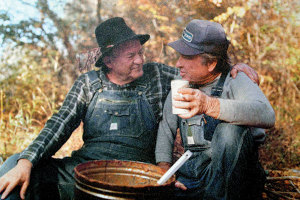 Fred says these events were held at random intervals, averaging about once a month, and usually ran all day long, averaging about 20 to 30 people at any one time, with others drifting in or out as opportunity allowed. Fred adds that they didn’t restrict themselves to Mulligan Stew, often substituting more basic country fare like chitterlings, barbecue or local game animals.
Fred says these events were held at random intervals, averaging about once a month, and usually ran all day long, averaging about 20 to 30 people at any one time, with others drifting in or out as opportunity allowed. Fred adds that they didn’t restrict themselves to Mulligan Stew, often substituting more basic country fare like chitterlings, barbecue or local game animals.
Under the leadership of young Ben, the Hazelwoods still follow the Mulligan tradition, usually every November at the old Skeeter Park site. They’ve been selling printed T-shirts and ball caps among their group since 1992 to help raise money for basic expenses, with the surplus going into a mutual aid fund to help members with unexpected hardship.
Ben mentions one fellow who got his hand chopped off in a work accident. The Mulligan fund helped this man’s family through some rough times.
The family says this year’s Skeeter Park Mulligan will be an especially poignant one, as they recently lost their beloved father and brother, Ben Hazelwood. Your writer has been invited, and I’m certainly looking forward to it.
No, I will NOT say when or where.











